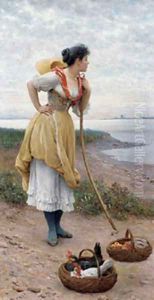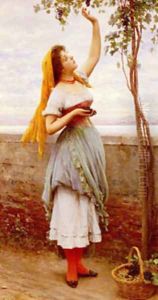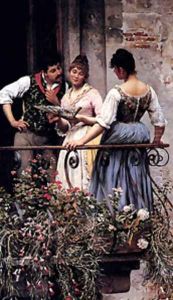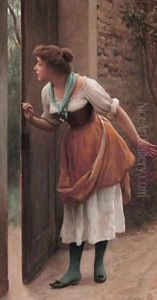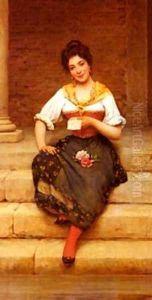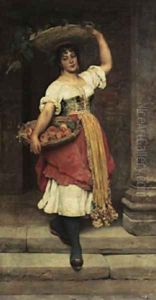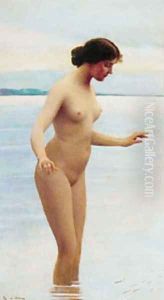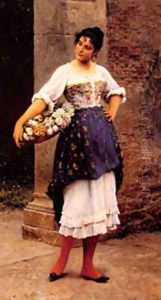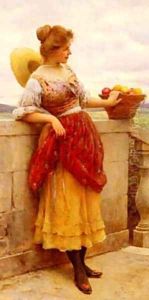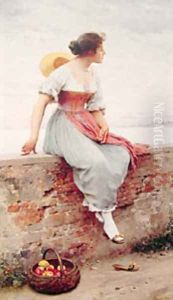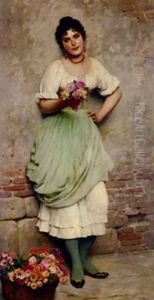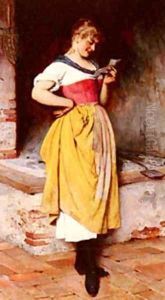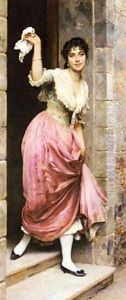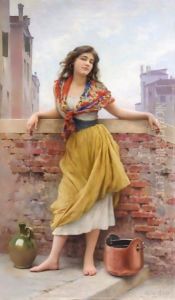Blaas Eugen De Paintings
Eugen von Blaas, also known as Eugenio De Blaas or Eugen de Blaas, was an Italian painter in the school of Academic Classicism, born on July 24, 1843, in Albano, near Rome. He was part of the Blaas family of artists, being the son of Karl von Blaas, a notable painter himself. Eugen's academic background and artistic training were rooted in the classical tradition, which was a predominant style in the 19th century, characterized by an emphasis on formal beauty, precision, and techniques derived from the study of antiquity and the Renaissance masters.
Eugen von Blaas established himself as a skilled painter of portraits and genre scenes, particularly known for his depictions of beautiful Venetian women. His works often capture the daily life and festivities of Venice, showcasing the vibrancy and romantic allure of the city. The detailed and vivacious portrayal of his subjects reflects the influence of the Venetian environment on his art, where he spent many years of his life, having moved to Venice in 1867 when his father took up a post at the Academy of Fine Arts.
In 1870, Eugen von Blaas became a professor at the Academy in Venice and later won various awards for his art, which was characterized by its rich detail, vibrant colors, and a particular focus on light effects, which imparted a sense of realism and immediacy to his scenes. His paintings were exhibited internationally and collected by patrons across Europe, contributing to his reputation as a leading figure in the world of fine arts during his lifetime.
Like many artists of the academic tradition, Eugen von Blaas's popularity waned with the advent of modernist movements, which sought to break away from the strictures of academic painting. However, his work has since been reassessed and is appreciated for its craftsmanship and historical value, offering insights into the culture and society of 19th-century Italy.
Eugen von Blaas continued to paint throughout his life and passed away on February 19, 1932, in Venice. His legacy is preserved through his works, which can be found in private collections and museums around the world, serving as testaments to his artistic skill and the enduring charm of academic classical painting.

